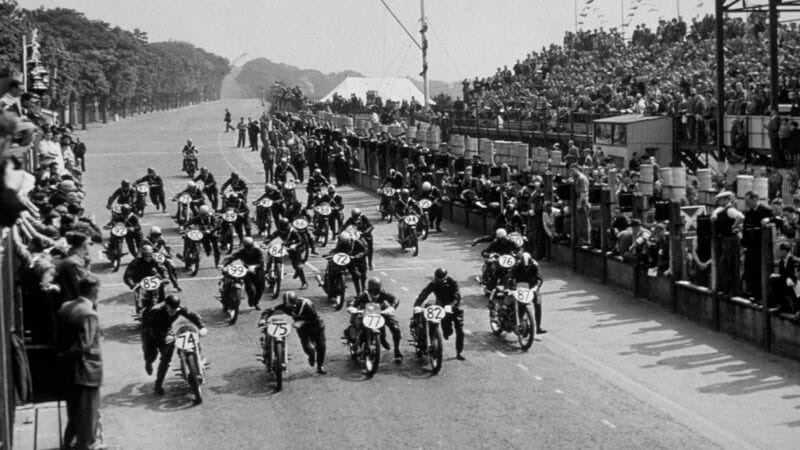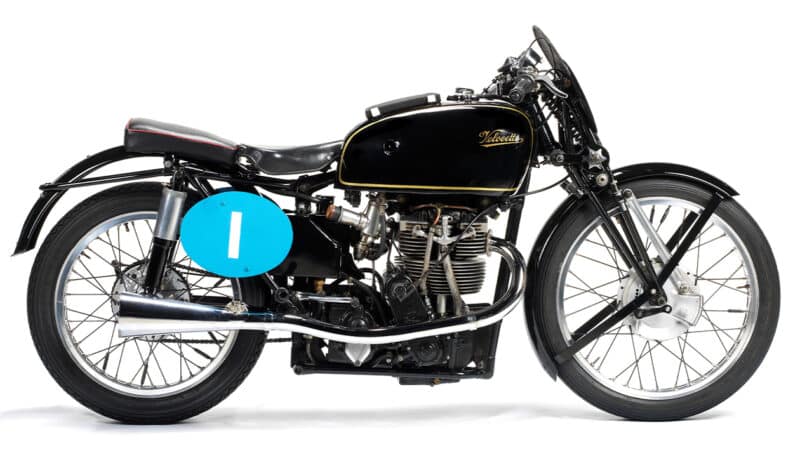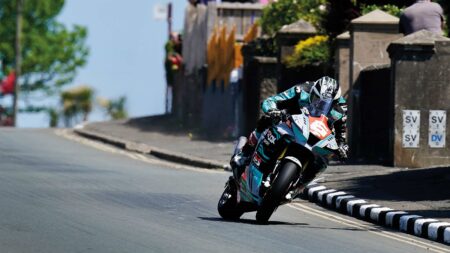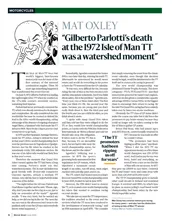The race was preceded by a parade of riders and machines along Glencrutchery Road, “With Boy Scouts carrying international flags leading the way, while loudspeakers blared out the traditional, March of the Gladiators.”
This was a jaunty little number by Czech composer Julius Fučík. Who said no one knew about promotion in the old days?
And yet some things never change…
“M Lockwood, who only passed the medical check this morning, after a practice crash, set off with a big white bandage around his jaw,” wrote Motor Cycling. Facial injuries were common before full-face helmets arrived in the 1970s.
Decorated WW2 bomber pilot Les Graham led the first lap but his AJS soon broke down. AJS team-mate Bill Doran took over the lead, only to have his gearbox break as he climbed Snaefell mountain for the final time.
“What rotten luck,” exclaimed Motor Cycling.
In fact AJS race bikes were renowned for their poor reliability because company management were a bunch of penny pinchers. This is what prompted Graham to leave AJS and sign for MV at the end of the following season.
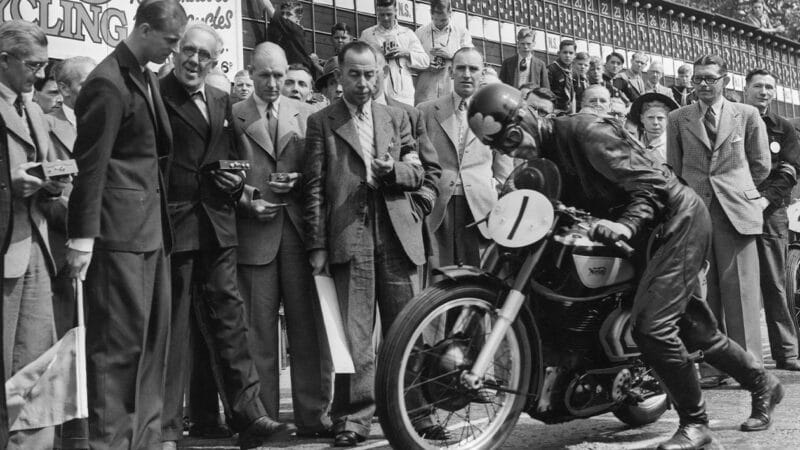
The first ‘MotoGP’ rider to turn a wheel in anger! Factory Norton rider Artie Bell is waved off by Prince Phillip at the start of the 1949 Senior TT
Getty Images
The benefactor of the AJS disaster was factory Velocette rider Freddie Frith, which made him one of the few riders to win TTs both before and after the war. He was joined on the podium by fellow Velo rider Ernie Lyons and third-placed Artie Bell.
Immediately after Frith’s victory the top finishers had their machines were stripped by scrutineers, a procedure which doesn’t continue today, much to the relief of Ducati’s Gigi Dall’Igna and other clever MotoGP engineers.
“Frith’s engine was found to be in excellent condition,” declared Motor Cycling. “If anything, it had run too cool – the combustion head, the huge inlet valve and the piston crown being covered in a thin film of oil. The sparking plug confirmed this impression, being a moist black.”
On the other hand, Bell’s third-placed factory Norton, “Was literally perfect – a nice dry combustion chamber, the thinnest possible skin of hard carbon on the piston crown”. But it didn’t win the race, did it?
“All the tokens promised clean roads, warm grass to sit upon and safe speeds. For what more could we ask?”
A few months later Frith – who had trained soldiers to ride motorcycles during the war – made more history when he became motorcycle racing’s first world champion. The 40-year-old and his 40-horsepower Velocette KTT single went unbeaten over the five 350cc rounds, so he was crowned before the season finale at Monza, Italy.
Four days after the Junior, the 500cc Senior race, the TT’s main event and forerunner of today’s 1000cc MotoGP category. This was seven laps: 264 miles (425 kilometres), three hours and two minutes for the winner!
Motor Cycling turned out its top scribe for the big one.
“During the night, no gales rattled the windows, no rain pattered on the roofs,” he wrote. “Snaefell wore a scarf of grey tulle [silk] around her head at dawn. But as the steamers double-banked at the Douglas quays to unload many thousands of unshaven passengers, out came the sun to warm their search for a café breakfast. All the tokens promised clean roads, warm grass to sit upon, safe speeds and a smooth homeward passage. For what more could we ask?”
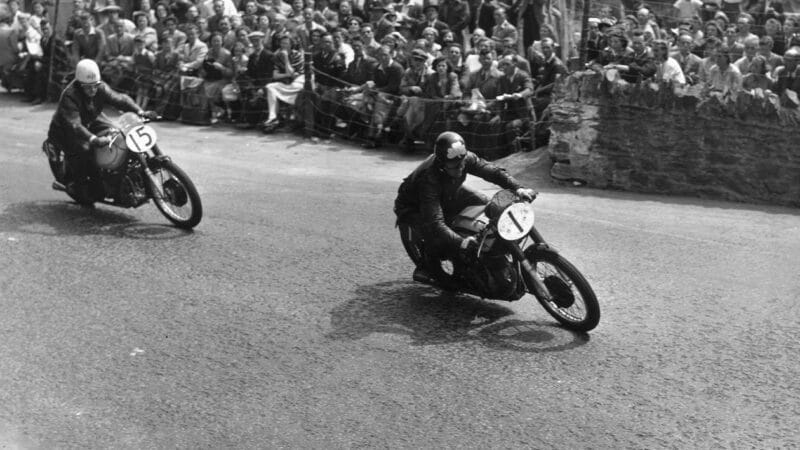
Factory AJS rider Ted Frend chases factory Norton rider Artie Bell through Quarter Bridge in the first ‘MotoGP’ race. Bell finished fourth, Frend withdrew with bike problems
Fox Photos/Getty Images
On that day there were 8000 spectators at Creg-ny-Baa alone.
The first premier-class world championship rider to turn a wheel in anger was factory Norton rider Bell, who plunged down Bray Hill after Prince Phillip had flagged him off at the start.
This time there was one foreign machine in the race – a factory-entered Moto Guzzi, ridden by Bob Foster, which set the fastest lap and led the way, until its clutch broke on lap six, 207 miles into the race.
